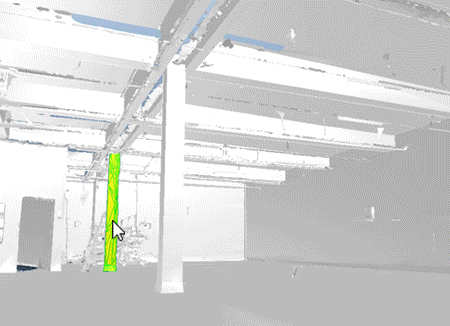Editor’s Pick: Point-Cloud Converter Updated

Pointfuse V3 introduces a selectable surfaces functionality that allows surfaces within 3D models to be identified, grouped and classified within a mesh. Image courtesy of Arithmetica Ltd.
Latest News
September 13, 2017
 Dear DE Reader:
Dear DE Reader:
Here’s an interesting new release from Arithmetica that comes out next week. Arithmetica specializes in tackling computationally intensive jobs. If you’re into laser scanning and/or photogrammetry, especially of big stuff that makes for huge data sets like machinery, factories or a movie star’s head, this is up your alley. You can also download a trial version to see what it’s about.
On Monday, September 18, Arithmetica will release version 3 of Pointfuse, its point-cloud conversion software. Among the key new features is something called selectable surfaces. And, in the spirit of Diophantus, Pointfuse V3 offers algorithmic enhancements that improve data processing performance compared with its predecessors.
 Pointfuse V3 introduces a selectable surfaces functionality that allows surfaces within 3D models to be identified, grouped and classified within a mesh. Image courtesy of Arithmetica Ltd.
Pointfuse V3 introduces a selectable surfaces functionality that allows surfaces within 3D models to be identified, grouped and classified within a mesh. Image courtesy of Arithmetica Ltd.The short take on Pointfuse is that it delivers a fast, automated and flexible way of converting large point-cloud data sets into high-fidelity vector models. It’s not fussy about the scanned data file formats you feed it. You can export the vector models it produces in most industry-standard formats for further processing in CAD. It can display point-cloud data in color and with textures when applicable.
Now, about Pointfuse V3’s selectable surfaces functionality. This is all about efficiency. It lets you categorize objects within 3D models by identifying, grouping and classifying them within a mesh. This, the company adds, brings workflow efficiencies to a project that are not possible when working with point clouds or traditional mesh models.
Combined with some user interface changes, the coding that improves Pointfuse V3’s data processing algorithms makes converting point clouds to high-fidelity models a process that can be managed in a matter of minutes, according to Arithmetica. It also simplifies matters through a one-parameter, one-button processing capability.
Along the same lines, Pointfuse V3 reduces the data density within each surface. This cuts down the file size of 3D models created from point clouds without affecting model fidelity adversely. What this means is that model sizes are smaller by a factor of 10 compared with before. That sort of reduction should make working with a model much more efficient.
Pointfuse is a 64-bit Windows application. Monthly and annual licenses are available. Pointfuse V3 will be offered at a sale price when it’s officially released on Monday.
You can learn more about Pointfuse V3 from today’s Editor’s Pick of the Week write-up. Hit the link to check out the gallery of interactive images enabled by the software. They’re neat. Then get the trial, play with it and see what you think. Good stuff.
Thanks, Pal. – Lockwood
Anthony J. Lockwood
Editor at Large, DE
Subscribe to our FREE magazine, FREE email newsletters or both!
Latest News
About the Author
Anthony J. Lockwood is Digital Engineering’s founding editor. He is now retired. Contact him via [email protected].
Follow DE





